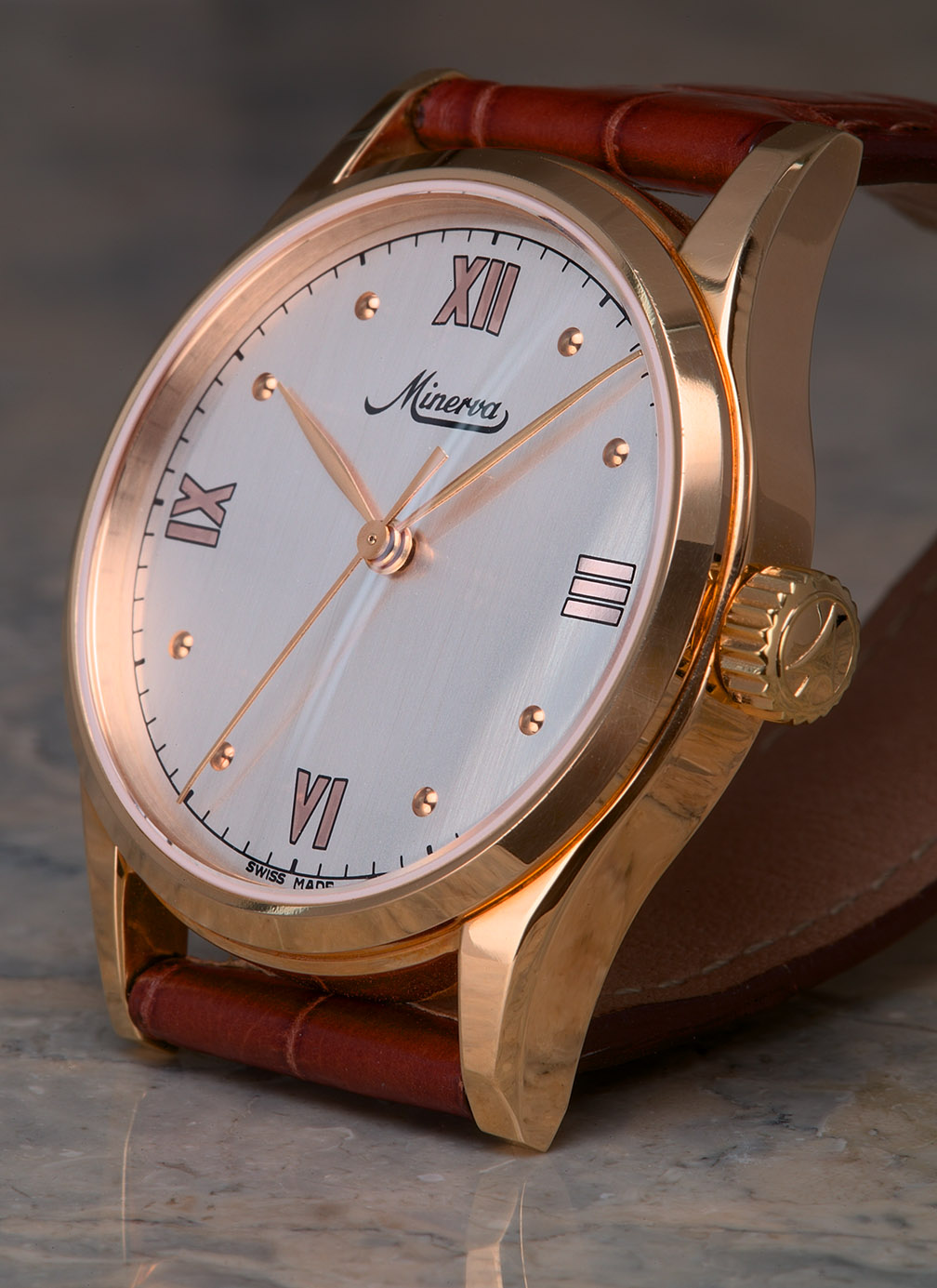The recent change of strategy at Minerva reminds me that the previous ownership, the friendly Frey family,
had somehow managed to drag their company to the very brink of the 21st century with resources consisting of
little more than a cleverly-named 60-year-old movement, a genuinely deep affection for their customers, and
the wisdom to fill a niche no larger, market-minded manufacture would ever bother with, but which miraculously
matched their slender resources with a tiny, but curiously eager clientele.
To provide a brief background, Minerva, was founded in Villeret by the Robert family in 1858. They were apparently
a successful middle-market watch company until the depression, when it was sold to an employee, Jacques Pelot,
who was joined by his nephew Andre Frey, in 1940. Besides shepherding the company into the third generation of
his family, Andre designed the caliber 48/49/50 movements which were to sustain the company from the early 1940s
right to the very end. While the company survived the quartz crisis largely on the sales of its line of sports timers, the
dawn of the 1990s brought renewed interest in mechanical watches, and while Minerva's primary wristwatch caliber
was an unexceptional movement, it was designed, manufactured and assembled on the premises, it had a distinctive
angular layout, and an unusually engaging name referring to that geometric arrangement of the bridges. Thus "Pythagore"
was the name applied when Minerva re-released these watches in the early 1990s.
The present watch was produced to commemorate the year 2000 for Minerva, and so this is the model's name. It marked
the first time they had placed their workhorse movement into a precious metal case since its re-introduction, and also the
return of the cal. 49 (center-seconds version of the cal. 48) to their catalog. Intended as a celebration, and apparently
to be elaborated later with distinctive dials and hands, and steel cases, just a few weeks after its release the company
was sold, the Frey family retired, and all current production came to an abrupt end while the new owners charted its
future. Probably only about 100 examples of Minerva's Pythagore 2000 were ever assembled.
(primary history from the booklet "Minerva 1858, L'Histoire")
(additional comments are posted at my much earlier article at this link here.
The 2000 used a modified Pythogore case 34mm wide by 8.9mm thick, made of a very light pink 18k gold. The chosen
dial was a radical departure from its very traditional predecessors. It is lightly brushed white metal with pink applied globes
and four very unusual hour markers, Roman numerals which are outlined in black and polished bright pink flush with the dial:


The famous movement is given a full decorative treatment, but clearly these parts were never intended for luxurious finish:




I hope you enjoyed this!

SteveG
February 22, 2006
All content Copyright asserted 2003, 2004, 2005, 2006